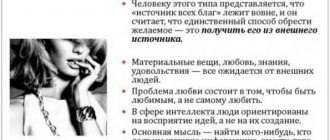I saw in some spy detective how a person’s character is determined by his signature. Tell me how to learn to determine character by the way a person signs.
In intelligence and detection, the more you know about the person you are interested in, the easier it is to create his psychological portrait. In some situations, you do not have physical contact with the person, and there is no way to collect information about him. In such situations, you can try to find out about the person using Graphology. You will learn about what Graphology is and how to use it in this article.
Do you want to know more about the hero of Conan Doyle's novel detective "Sherlock Holmes"? Read the article “Who was the real Sherlock”
What is Graphology
Graphology is the science of handwriting and methods of studying it from the point of view of the mental states and personality traits of the writer reflected in it.
Graphology: Character by handwriting
There are quite a few books that talk in detail about Graphology. At the end of the article I will list all the books I know. Typically, such books provide a lot of useful and not entirely useful information. In this article I will give the most important points that you need to pay attention to if you need to recognize the character by a person’s signature and handwriting.
Letter size
A signature in which the capital letter is significantly larger than the lowercase letters belongs to a capricious person who is too demanding of others.
If the size of the capital letter differs little from the size of the lowercase letters, the owner of the signature is a modest person without any special claims to life.
If all the letters in the signature are small, this speaks of the owner as a rational, economical, specific person, capable of concentrating his mind. Egoists who are prone to stinginess usually write in very small letters.
Childishly large letters in the signature speak of a dreamy, naive, kind, trusting and impractical person. Sometimes people who strive for freedom of action and independence sign this way.
Determine character by signature
1. Signature size: a) sweeping - global systems thinking; b) compact - concrete thinking.
2. Signature length: a) long - the ability to delve deeply into the essence of problems; perseverance, excessive pickiness and tediousness; b) short - the ability to quickly grasp the essence of events. Inability to do monotonous work.
3. Type of signature: a) rounded - softness, kindness, balance; b) angular - intolerance, irritability, harshness, independence, ambition, stubbornness.
4. The distance between the letters: a) significant - generosity, squandering; b) “dense” signature - economy, stinginess (especially if the letters are small).
5. The presence of various elements in the signature: a) circle - fixation on problems and ideas; b) loops - caution, stubbornness; c) drawings - creative thinking; d) combining elements - the desire to optimize one’s activities.
6. The inclination of the signature: a) to the left - willfulness, pronounced individualism; b) to the right - balance of character, ability to understand; c) direct slope - restraint, straightforwardness, intelligence; d) different types of inclination - secrecy, insincerity; e) “lying” letters - the presence of serious psychological problems.
Character by signature
7. Direction of the final stroke: a) up – optimism; b) down - a tendency towards pessimism; c) straight - balanced character;
8. Length of the “tail” of the signature. The longer the “tail,” the more intolerant a person is of other people’s opinions. This is also a sign of caution and caution. The shorter the “tail,” the more careless the person is.
9. Underlining the signature: a) from below - pride, touchiness, dependence on the opinions of others; b) from above - pride, vanity; c) crossed out signature - self-criticism, dissatisfaction with oneself, doubt.
10. Signs of symmetry: a) symmetrical - reliability; b) asymmetrical - unstable character, mood swings. c) spasmodic - emotionality, imbalance
11. Complexity and simplicity: a) simple - a person lives according to the principle “no problems”; b) “loaded” - often inclined to “make mountains out of molehills”; c) original - great creative potential.
12. Legibility The more understandable the signature, the more open the person is.
13. Pressure: a) excessive – aggressiveness; b) weak – secrecy; c) strong – confidence.
How to find out personal qualities
- Signs of an intelligent person. Letters without decorative elements, the slope is either absent or barely noticeable. The distance between words is the same. The letters are round, neither large nor small.
- The stupidity is revealed by hooks, different distances between words, and uneven pressure. Particular attention is paid to capital characters.
- A hot-tempered personality is indicated by symbols that rise above the line. The endings of the last letters in a word go down below the lines.
- Strong-willed individuals apply even pressure, but the letters do not separate. The number of strokes is small. The letters are round and the writing is clear.
- Composure is revealed by uneven lines, but the last word is always in its place. The letters are written neatly, but the distance between the words is different.
- Balanced people have beautiful handwriting, although the text may seem difficult to read at first.
- Abusive people often underline the letters, but spell them out carefully.
Character by handwriting with examples
Now let's move on to practice and clearly see examples of different handwritings and character determination from them.
This handwriting belongs to a self-confident, strong and proactive person. This is evidenced by the firm style of writing, the large size of letters and strokes, and in addition the direction of the lines, which can be described as generally progressive.
Handwriting of a self-confident person
On the contrary, the example of handwriting in this picture speaks of a person who is unsure of his abilities and does not have definite, accurate views on life. This property of a person’s character is indicated by the lack of stability of strokes and the general unevenness of the text, unequal sizes of spaces and letters, as well as the ambiguous direction of the lines.
Handwriting of a man who has uncertain views on life
The handwriting of an extraordinary, extravagant person: the movements of his hand when writing are sweeping and wide. His handwriting illustrates extreme practicality, since this person even places text on a piece of paper, taking into account the amount of space.
There is extravagance in the character
Practicality dominates the character of this person.
In the following two examples, the handwriting indicates the organization and disorganization of their authors. In the first case, the linear interval is clear, in the second case it is fuzzy.
This person is very organized
And the author of this handwriting lacks organization
The speed at which the text is written in the next two pictures can tell us a lot. In particular, about how patient this person is.
The speed of writing text indicates impatience
This person has a lot of patience
The inclination of letters when writing can indicate how tense a person is or, conversely, how relaxed he is.
Discreet character
This man is very relaxed
And the more the handwriting of a certain individual differs from the generally accepted manner of writing, the more unique his personality is.
This type tends to follow conventions. Independence and arbitrariness in decisions.
Accuracy when writing a sample text presupposes a disciplined person. And negligence in writing is evidence of a lack of any discipline.
Self-discipline is high enough
Indiscipline
The shape of letters also plays an important role in determining the character of handwriting. For example, those people whose letter shapes are preserved may indicate clarity of thought. Irregularly shaped letters, on the contrary, indicate unclear thinking.
Clarity in thoughts
Fuzzy thinking
If you are engaged in private investigation. I recommend reading the article “How to take hidden photos”
Direction of the signature (look where its tail is directed)
Up. Here is the signature of a purposeful, energetic, optimistic person. He easily overcomes all life's troubles and disappointments, being reborn with new strength, ideas and desires. This signature is often found among creative individuals.
Directly. The character of the owner of the signature balances optimism and pessimism. This or that trait manifests itself only under the influence of external factors.
Down. The character of the owner of the signature is dominated by a pessimistic attitude, which interferes with the manifestation of creative activity. This person either has no faith or very weak faith. He has a weak will and low tolerance to alcohol.
Graphology books
As promised, I am posting a list of the best books on Graphology:
- Goldberg - Psychology of Handwriting
- Solomevich - Handwriting and character
- Mayatsky – Graphology
- Zuev-Insarov - Handwriting and personality
- Bastrykin – Forensic study of writing
- Taranenko - Handwriting, portrait, character
- Kravchenko - Character by handwriting
- Morgenstein – Psychographology
- Naj - Find out a person's character by his signature
- Petrasyan - How to make handwriting talk
- Potemkina – Psychological analysis of text
- Mantsvetova – Theoretical foundations of handwriting science
Using Yandex or Google search you can download all the above books on Graphology.
Who has the right to sign documents
Different persons can act on behalf of the organization and endorse business papers. Conventionally, they can be divided into several groups:
| Category | Base | Examples | List of documents |
| Sole executive body | Charter, Art. Art. and law 14-FZ | CEO, President, Managing Director | The list remains open. It includes transactions, orders, instructions, powers of attorney, etc. |
| Collegial executive body | Charter, Art. 41 of Law 14-FZ | Chairman of the board or directorate | Competence is determined by the charter |
| Collegial governing body | Charter, Art. 44 Law 14-FZ | Head of the Supervisory Board | The scope of powers is prescribed by the charter |
| Owners | Charter, Art. –, – Law 14-FZ, Art. 9 of Law 129-FZ | Founders and participants who became part of the LLC after its creation | The owners of the company have the right to sign the minutes of the general meeting. The sole participant issues decisions. The founders of the LLC are also given the right to sign the application P11001 |
| Staff members | Director's order on signing documents | Chief accountant, deputy directors, lawyer, HR inspector, cashier, etc. | The list is established by the job description or internal regulations |
| Representatives | LLC power of attorney for signing rights | Lawyers, court defenders, outsourced specialists | The list of documents is prescribed in the power of attorney |
| Control authorities | Charter, Art. 47 of Law 14-FZ | Auditor or chairman of the audit commission | The signature is placed on conclusions and reports, as well as annexes to them |
| Independent specialists | Court decision, law 127-FZ of October 26, 2002 | External and bankruptcy managers, specialists responsible for the financial recovery of the company | The powers of such representatives are determined by the procedural provisions. Thus, the competences are devoted to Art. , , Law 127-FZ. Managers act for the director or together with him, in the interests of bankruptcy creditors |
| Liquidators | Charter, decision of the general meeting of owners or sole founder, Art. – Law 14-FZ | Chairman of the liquidation commission | The liquidator signs the entire set of documents to terminate the company's activities. He acts as the head of the LLC and is recognized as an applicant at the stage of registering the closure of the business. |
If the document is signed by several officials
The situation of signing a document by several officials is considered equally by the current GOST R 6.30-2003 and the new GOST R 7.0.97-2016.
These may be signatures of unequal officials of the same organization
, then they are arranged in hierarchical order.
For example, a letter of guarantee is always signed not only by the head of the organization, but also by its chief accountant. It can be issued on a form or without using it.
If a joint document is signed (for example, an order or instruction, a letter of instruction) by officials representing different management bodies/organizations
, then this does not involve the use of forms and requires the registration of the full names of similar positions at the same level:
The same rule is observed when signing a contract. Only before the signatures are the “generic” words introduced in the preamble and used later in the document as conventional abbreviated names of the parties to the contract (for example, “Customer” and “Contractor” or “Buyer” and “Supplier”). See Example 18.
And finally, in acts that are drawn up collectively by the commission
, it is provided that instead of naming specific positions of the commission members, their status (“roles”, powers) within the commission, which are determined in the order (instruction) on its creation, is formalized there.
And as a conclusion, advice: in connection with the entry into force of the new standard for the preparation of organizational and administrative documents from July 1, 2022, do not forget to prepare the necessary changes to the Instructions for office management of your organization. As you can see, there will be no significant changes in the signature design.
We wish you success!
Free 1 issue of the magazine
on
Scope and use
An electronic signature is a key element of electronic document management. This technology is widely used in external and internal data exchange, in personnel and legislative spheres, commercial and industrial areas, and so on.
Controlling authorities certify the verification with an electronic signature. Since this development has become widespread, it is easy to use. The electronic signature certificate, which is issued upon registration, gives legal significance to the documents.
Any citizen of the state has the right to receive an electronic signature in order to use the list of government services defined on the website. With its help, you can certify documents, submit applications for new ones, and also receive relevant letters and notifications. Thanks to this opportunity, every user can certify a sent letter without leaving home. In addition, from the beginning of 2013, the production of electronic cards was launched, where an electronic signature is automatically placed.
Such developments have made a necessary contribution to the development of society. Now employees do not have to carry around with a pile of papers required for signature, but simply send the document by electronic message.
When a document is signed by several persons
If a document is signed by several officials, then their personal symbols are located in one column below each other. When preparing a document in printed form, one and a half line spacing is used.
Documents are signed first by those persons who are located at the highest rung of the job ladder, that is, the document is certified from top to bottom. If the text needs to be signed by officials who are equal in position, then their surnames are located on the same line.
The document is drawn up in the same way when the agreement is signed by several partners or parties concluding a transaction.
Full or abbreviated job title
How to indicate the position (in full or abbreviated) depends on whether the document is drawn up on the appropriate form.
According to GOST R 7.0.8-2013, a document form is a sheet of paper or an electronic template with details identifying the author of an official document. The document form can be held not only by the organization, but also by its division or official (accordingly, data about them is included on the form in the header section), then there is no need to repeat
(See Examples 1–3 and 7–9).
If the document is not drawn up on letterhead, then the “signature” detail must include the full name of the position
(Examples 10–12). In this, the current GOST R 6.30-2003 and the new GOST R 7.0.97-2016 are in agreement.
Examples 7–9 clearly show that the more information about the author of the document in the form, the less of it remains in the “signature” attribute.
A Examples 10–13 demonstrate that when a position is fully indicated, the name of the organization is included
, which is the author of the document and on whose behalf the signatory (authorized official) has the right to act. If there are official abbreviations for this name (in the organization’s charter, regulations, Unified State Register of Legal Entities, etc.), then they can be used.











